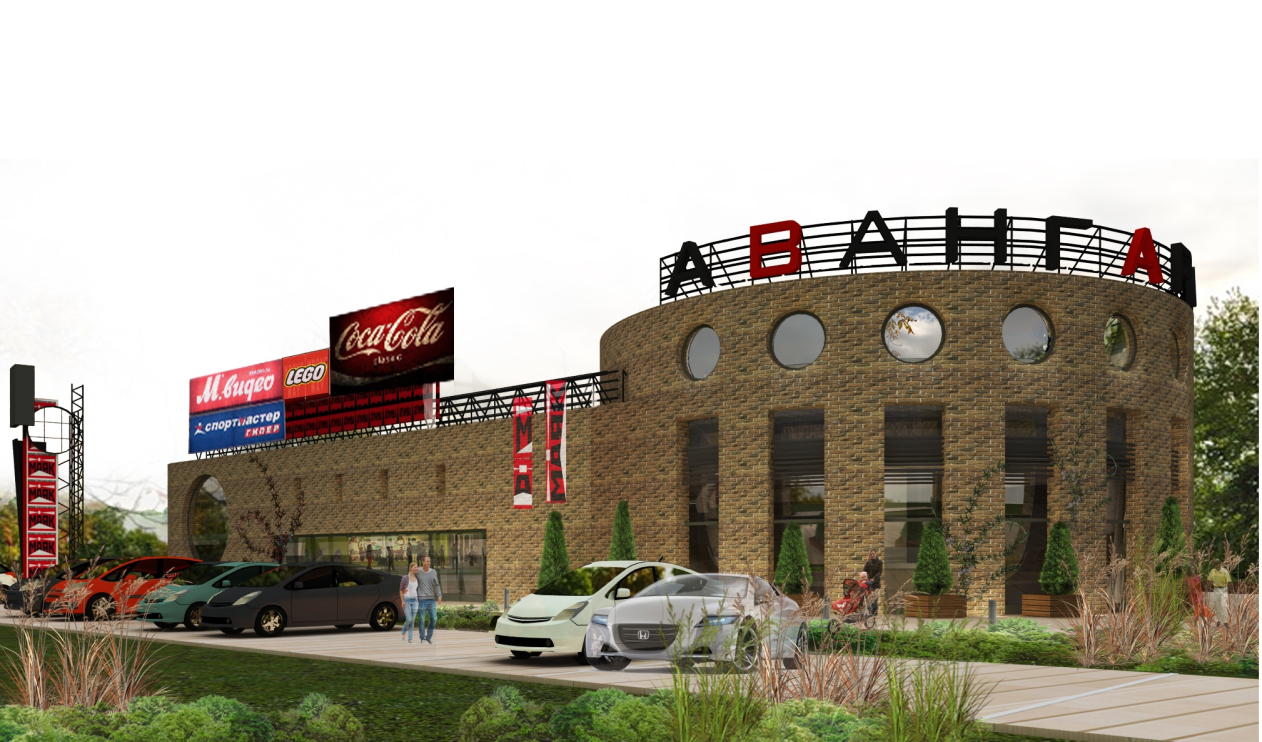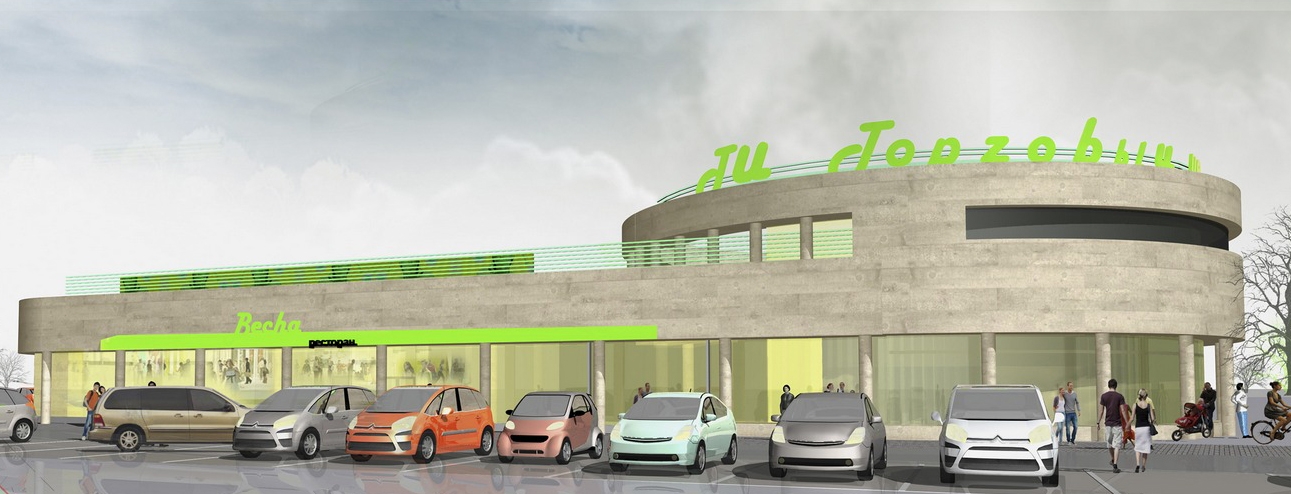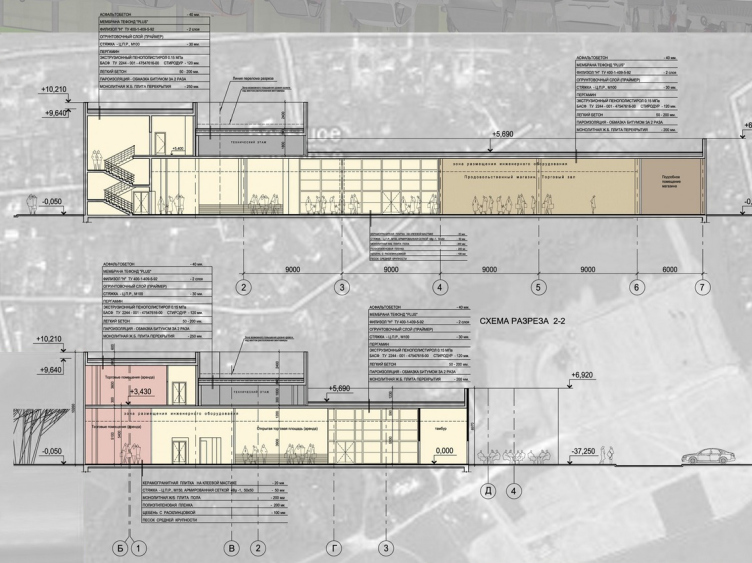
"Avantgarde" shopping center. "Arkhstroydesign" Studio
Aleksey Ivanov:
“This was a project of a small shopping center in Moscow Region, with an area of less than fifteen hundred square meters, and we developed it in a rather short period of time. The customer, with whom our studio goes back a long way, asked us to prepare a working project on the basis of the already available draft proposal. However, once we got down to work we realized that the draft that was offered to us did not in the least answer either the construction regulations or the boundaries of the construction site. As a result, we had to design the building virtually from scratch.
The land site is located on the Kievskoe Highway and is overlooking a busy crossroads where the traffic is constantly on the heavy side. Basically, the location might have been considered pretty suitable for placing a shopping center here: nearby, there is a building materials market, and across from it there are some small retail stores, as well as a car park. The surrounding housing, however, is all too chaotic, and the urban infrastructure does not seem to have any planning here. The only the more or less though-through space here is a small villa community located at a certain distance from the land site and behind a high rock fence. Perhaps, it is the only factor that forms the frontage line here.
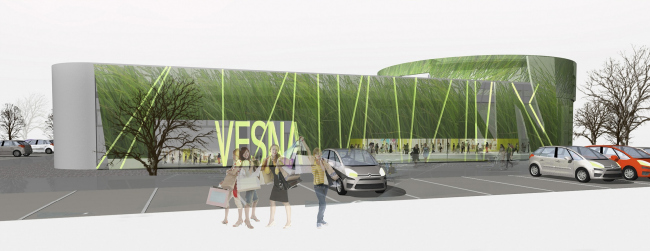
"Avantgarde" shopping center. Facade design. "Arkhstroydesign" Studio
Considering such a deplorable town-building environment, the first thing that occurred to us was the idea of designing not just a shopping center but a centerpiece that would be capable of "fixing" this land site. It was supposed to be a powerful landmark, able to give this place a prop, make all the surrounding unorganized space revolve around it. I have to admit that for our studio this is a rare tactic: usually we carefully analyze and consider the context, but with the environment like this, we decided to ignore it completely - which also implies some kind of relation to the context.
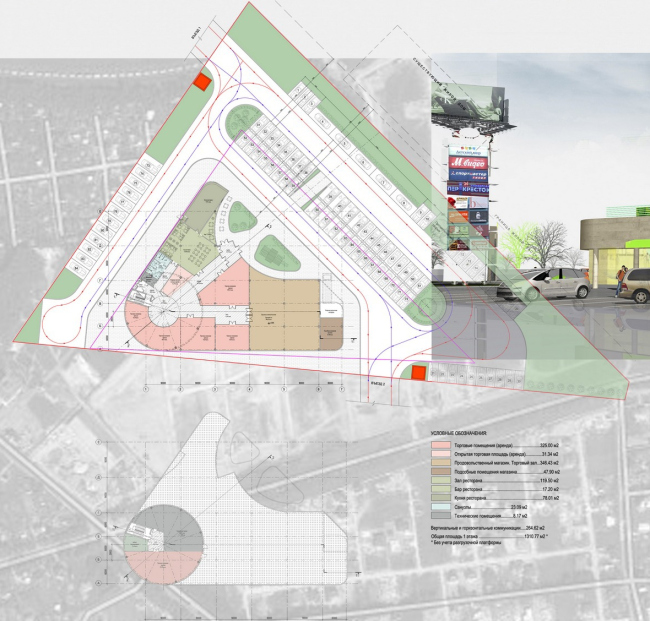
"Avantgarde" shopping center. Master plan. "Arkhstroydesign" Studio
This is how we came up with the idea of a bastion - a sturdy, impregnable and dominant. Turned to the truck road, its rounded corner resembles a fortress wall. We intentionally made the outside boundary of the building practically blind, and only the small apertures of windows are meant to show that there is a world going on inside. Rem Koolhaas had a whole study on New York, in which he wrote that the windows were relevant for boutiques and malls, while for the shopping center typology they were totally redundant. And in this sense our facade completely reflects the functional purpose of the building, drawing visitors, but in this case demonstratively fencing off from the noise and fuss of the motor road.
For finishing the facades, it was planned to use ceramic brick or tile. However, attempting to give to the building additional grandeur and power, we decided to make its walls of variable thickness. The easiest way to achieve this would be to use the foam-concrete blocks from 1000 to 500 mm thick which would yield deeper windows and which would strengthen the effect of a fortress wall.
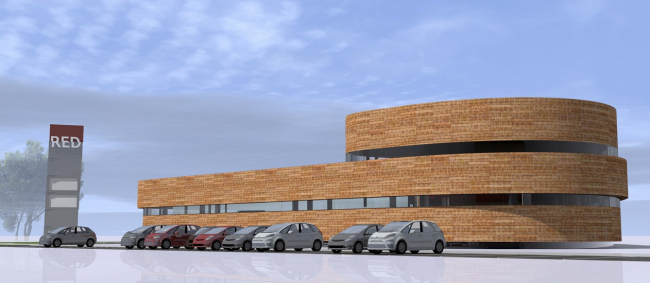
"Avantgarde" shopping center. Facade design. "Arkhstroydesign" Studio

"Avantgarde" shopping center. Facade design. "Arkhstroydesign" Studio
With all the inaccessibility of the external appearance of the shopping center, its inner area in front of the main entrance is designed as a friendly and comfortable territory. From the outside world and the chaos of the superhighway it is hidden behind the fortress wall of the complex which the visitors must go around in order to get to the entrance area. In front of the building, there is going to be a children's playground; the entire territory will be improved and landscaped. Also, this inside area will be surrounded by the cafes and restaurants; in the summertime it will be possible to bring the tables outside. Furthermore, for the summer cafe the operable roof may be used where, if necessary, a rain-protective tent can be set up, as well as an extra heated floor can be added. The fact is that at first this shopping center was designed as a single-story building, but we proposed to our customer to consider the possibility of further development of this volume without compromising either its framework or architectural appearance.
Yet another important point that we considered while designing this complex was the concept of placing the advertisements and billboards. The billboards always look more aggressive and flamboyant than the facades, attracting people's attention much more than the architecture. As a rule, the architect has two options to choose from - either to make advertising on the facades of his building impossible, which happens extremely rarely or to provide, while still in port, the most painless scenario of placing the signage. This is always a challenging issue, in particular when it comes to the curvilinear surface, as in our case. We proposed to customer to place the advertisements on the frieze of the building, and also on the free-standing advertising tower, as is common in the American cities.
It is still unclear whether this project will ultimately be implemented. In spite of the fact that the stated task of preparing the project documentation as soon as humanly possible was fulfilled, today the project is frozen. Just like many others. But there will be a thaw?

"Avantgarde" shopping center. Section views. "Arkhstroydesign" Studio

